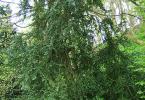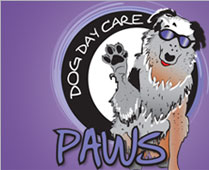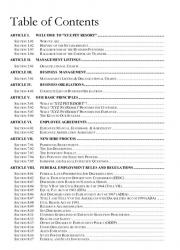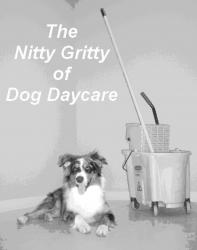Swamp Maple

Swamp Maple
Acer rubrum
Aceraceae
Unidentified Toxin (possibly tannins)
Depression, inappetence, icterus (Jaundice), anemia, fatigue, tachypnea (rapid breathing), dyspnea (shortness of breath), abdominal discomfort, tachycardia (racing heart beat), cyanosis (bluish mucous membranes or skin from lack of oxygen), miscarriage/abortion in pregnant mares, discolored urine, hemoglobinuria, brown discoloration of mucous membranes and blood, death (Death can occur within 24 hours or as long as a week after ingestion)
The toxic principle of Swamp Maple is as of yet, unidentified. What is known is that the toxin is deadly to all members of the horse family (equidae) including ponies, donkeys, and zebras. The toxin works by causing oxidative damage to the hemoglobin of red blood cells reducing or eliminating their ability to carry oxygen from the lungs to the rest of the body. Additionally the toxin has also shown the ability damage the actual membranes of red blood cells. In vitro evidence suggests that tannins may be responsible for the dissolution or destruction of the red blood cells. The end result is widespread cellular death in all organs of the body due to oxygen starvation. The medical term for this process of demise is hemolytic anemia; the red blood cells will actually rupture releasing their hemoglobin into surrounding plasma. As more and more red blood cells rupture, the total number available to transport oxygen to the vital organs of the body decreases creating a condition known as 'anemia' or too few red blood cells and less than a sufficient quantity of hemoglobin. Due to this deficiency in hemoglobin and red blood cells, anemia leads to hypoxia (lack of oxygen) in organs. Since cells depend on oxygen for survival, anemia can have a wide range of clinical consequences as oxygen deprivation causes various organs to shut down.
The odds of Swamp Maple poisoning rise in the fall or after the occurrence of a storm when the leaves either fall or are stripped from their branches and become accessible to horses. There is some disagreement in the medical community as to whether the fresh leaves are toxic, with some authorities saying they are, and some saying they are not. Regardless of this disparity, it would be wise to err on the side of caution and assume fresh leaves to be toxic as well. All reliable sources agree that the wilted or dried leaves are deadly toxic to horses, and can remain that way for 30 days or more. Additionally the bark is also toxic and contains the "unidentified" toxin in levels comparable to those found in dried or wilted leaves. Most sources also agree the amount the average horse needs to ingest to suffer potentially fatal consequences is around 1.5kg (3.3 lbs) or 0.3% of total body weight, although any amount will begin damaging cells.
Even with aggressive treatment, the prognosis for horses that have ingested a large amount of Swamp Maple is guarded. Treatment for Carolina Maple poisoning, as it is for many types of poisonings is going to be symptomatic and supportive. If the ingestion was recent then activated charcoal may be of use. If the patient is suffering more advanced clinical signs then it is going to be important to monitor packed cell volume and kidney function. IV fluids are also recommended to provide support to the kidneys and prevent dehydration. In many cases a blood transfusion will be necessary in combination with drugs and supportive care. Due to the anemia reducing oxygen levels in the blood, treatment with 100% oxygen should also be considered.
There has been some success in treating horses that have ingested potentially fatal amounts of Swamp Maple as noted in the following excerpted paragraph from a Cornell University College of Veterinary Medicine case analysis:
"Two horses with red maple (Acer rubrum) toxicity responded to treatment with high doses of vitamin C (ascorbic acid), in addition to blood transfusions, and intravenous fluid therapy. The clinical course included Heinz body anemia, marked methemoglobinemia, depression, and evidence of severe tissue anoxia. Clinical recovery was dramatic with stabilization achieved 36 hours following the initiation of ascorbic acid therapy."--McConnico RS, Brownie CF. The use of ascorbic acid in the treatment of 2 cases of red maple (Acer rubrum)-poisoned horses. Cornell Vet, 82:293-300, Jul 1992
Although not specifically listed in the above excerpt, ascorbic acid (vitamin C) has shown to be effective at reducing methemoglobin (oxidized form of hemoglobin that has a decreased affinity for oxygen) back to hemoglobin as a dose rate of 30 to 50mg/kg twice daily as part of the IV fluids. It was noted that it takes two doses to reach adequate blood plasma levels.
Lastly and a bit less documented is the use of Oxyglobin (purified bovine hemoglobin) with blood transfusions. A treatment regimen that proved successful in two separate incidents, one involving a miniature horse and the second a pony at Tufts University. Although no details of the specific treatment regimen are available Oxyglobin is an oxygen-carrying fluid that can provide much needed oxygen to cells until recovery is complete, or it could be used to stabilize the animal until a full blood transfusion can be provided. As stated at the beginning of this section, even with aggressive treatment the prognosis for animals that have ingested potentially lethal levels of Swamp Maple is guarded. In the event you notice your horse ingesting this toxic plant, stop them immediately, remove any excess plant matter from the mouth, seek veterinary care.
Carolina Maple

Carolina Maple
Acer rubrum
Aceraceae
Unidentified Toxin (possibly tannins)
Depression, inappetence, icterus (Jaundice), anemia, fatigue, tachypnea (rapid breathing), dyspnea (shortness of breath), abdominal discomfort, tachycardia (racing heart beat), cyanosis (bluish mucous membranes or skin from lack of oxygen), miscarriage/abortion in pregnant mares, discolored urine, hemoglobinuria, brown discoloration of mucous membranes and blood, death (Death can occur within 24 hours or as long as a week after ingestion)
The toxic principle of Carolina Maple is as of yet, unidentified. What is known is that the toxin is deadly to all members of the horse family (equidae) including ponies, donkeys, and zebras. The toxin works by causing oxidative damage to the hemoglobin of red blood cells reducing or eliminating their ability to carry oxygen from the lungs to the rest of the body. Additionally the toxin has also shown the ability damage the actual membranes of red blood cells. In vitro evidence suggests that tannins may be responsible for the dissolution or destruction of the red blood cells. The end result is widespread cellular death in all organs of the body due to oxygen starvation. The medical term for this process of demise is hemolytic anemia; the red blood cells will actually rupture releasing their hemoglobin into surrounding plasma. As more and more red blood cells rupture, the total number available to transport oxygen to the vital organs of the body decreases creating a condition known as 'anemia' or too few red blood cells and less than a sufficient quantity of hemoglobin. Due to this deficiency in hemoglobin and red blood cells, anemia leads to hypoxia (lack of oxygen) in organs. Since cells depend on oxygen for survival, anemia can have a wide range of clinical consequences as oxygen deprivation causes various organs to shut down.
The odds of Carolina Maple poisoning rise in the fall or after the occurrence of a storm when the leaves either fall or are stripped from their branches and become accessible to horses. There is some disagreement in the medical community as to whether the fresh leaves are toxic, with some authorities saying they are, and some saying they are not. Regardless of this disparity, it would be wise to err on the side of caution and assume fresh leaves to be toxic as well. All reliable sources agree that the wilted or dried leaves are deadly toxic to horses, and can remain that way for 30 days or more. Additionally the bark is also toxic and contains the "unidentified" toxin in levels comparable to those found in dried or wilted leaves. Most sources also agree the amount the average horse needs to ingest to suffer potentially fatal consequences is around 1.5kg (3.3 lbs) or 0.3% of total body weight, although any amount will begin damaging cells.
Even with aggressive treatment, the prognosis for horses that have ingested a large amount of Carolina Maple is guarded. Treatment for Carolina Maple poisoning, as it is for many types of poisonings is going to be symptomatic and supportive. If the ingestion was recent then activated charcoal may be of use. If the patient is suffering more advanced clinical signs then it is going to be important to monitor packed cell volume and kidney function. IV fluids are also recommended to provide support to the kidneys and prevent dehydration. In many cases a blood transfusion will be necessary in combination with drugs and supportive care. Due to the anemia reducing oxygen levels in the blood, treatment with 100% oxygen should also be considered.
There has been some success in treating horses that have ingested potentially fatal amounts of Carolina Maple as noted in the following excerpted paragraph from a Cornell University College of Veterinary Medicine case analysis:
"Two horses with red maple (Acer rubrum) toxicity responded to treatment with high doses of vitamin C (ascorbic acid), in addition to blood transfusions, and intravenous fluid therapy. The clinical course included Heinz body anemia, marked methemoglobinemia, depression, and evidence of severe tissue anoxia. Clinical recovery was dramatic with stabilization achieved 36 hours following the initiation of ascorbic acid therapy."--McConnico RS, Brownie CF. The use of ascorbic acid in the treatment of 2 cases of red maple (Acer rubrum)-poisoned horses. Cornell Vet, 82:293-300, Jul 1992
Although not specifically listed in the above excerpt, ascorbic acid (vitamin C) has shown to be effective at reducing methemoglobin (oxidized form of hemoglobin that has a decreased affinity for oxygen) back to hemoglobin as a dose rate of 30 to 50mg/kg twice daily as part of the IV fluids. It was noted that it takes two doses to reach adequate blood plasma levels.
Lastly and a bit less documented is the use of Oxyglobin (purified bovine hemoglobin) with blood transfusions. A treatment regimen that proved successful in two separate incidents, one involving a miniature horse and the second a pony at Tufts University. Although no details of the specific treatment regimen are available Oxyglobin is an oxygen-carrying fluid that can provide much needed oxygen to cells until recovery is complete, or it could be used to stabilize the animal until a full blood transfusion can be provided. As stated at the beginning of this section, even with aggressive treatment the prognosis for animals that have ingested potentially lethal levels of Carolina Maple is guarded. In the event you notice your horse ingesting this toxic plant, stop them immediately, remove any excess plant matter from the mouth, seek veterinary care.
Boxwood is Posionous To Pets

Boxwood
Buxus sp.
Buxaceae
Butyraceous (butter-like) oil, and three alkaloids: buxine, cyclobuxine, and cycloprotobuxine. (Pronounced negative effect on horses)
In dogs and cats, mild to severe gastroenteritis (inflammation of the gastrointestinal tract) resulting in some combination of diarrhea, vomiting, abdominal pain and cramping. In horses symptoms are much more severe and include colic, diarrhea, seizures and convulsions which can lead to respiratory arrest and death.
Commonly used in landscaping as an ornamental hedge around houses, the Box tree is noted for both its toxicity as well as its medicinal properties. It is native to both western and Southern Europe, southwest Asia, and northwest Africa. Introduced to the United States long ago, they have widely escaped cultivation to become naturalized and can be found as far north as New York and as far south as Puerto Rico. As with many toxic or potentially poisonous plants, the degree to which an individual is affected depends upon the part of the plant consumed, the amount consumed and the individuals susceptibility to the toxin at hand; with some animals being considerable more susceptible (most notably horses) than others.
To date there has been no record of human mortality from over consumption of Box tree, however, the constituent parts of the plant to which its effects are attributed: butyraceous (butter-like) oil, and three alkaloids: buxine, cyclobuxine, and cycloprotobuxine; can and have killed grazing animals such as horses. A highly toxic dose for horses would be around one and a half to two and a half pounds of leaves or roughly .15 percent (.0015%) of body weight. The initial symptoms would be severe gastroenteritis (vomiting, diarrhea, obvious abdominal pain and discomfort) followed by convulsions which could lead to respiratory arrest and death.
Not only toxic, the box tree has also found much use over the years for medicinal purposes. The alkaloids are believed to deter certain pathogens that would otherwise promote disease. To treat rheumatism and syphilis, the wood was boiled down to a decoction; to treat epilepsy and the pain of a toothache, the volatile oils were used for their sedative and narcotic effect. It also found use in early veterinary medicine as an Anthelmintic to expel intestinal worms by drying and grinding the leaves to a powder and administering them orally. Despite the well known health risk to horses, powdered Box tree leaves were used to rid them of the parasitic larva of the botfly. In folk medicine it was also held in high regard as the acceptable remedy for the bite of a rabid animal.
In animals such as dogs and cats the likelihood of death or serious negative effects is rare. Most often symptoms will be limited to lethargy, vomiting, and diarrhea; with the vast majority of pets making a full recovery with only symptomatic treatment. Members of the Buxus sp. tend to have bitter, unpleasant taste that limits consumption, thus limiting the amount of toxin ingested. . Prevent further access to the plant, remove any plant material still in the mouth, consult your veterinarian.
In grazing animals, especially horses the effect of the toxins is much more pronounced and potentially lethal. Unfortunately there is no specific or reliable treatment. Veterinarians may give symptomatic treatments that have proved valuable in other plant alkaloid poisonings. However, recovery will depend largely on the severity of the poisoning and the individual animals susceptibility to the toxins. Prevent further access to the plant, remove any plant material still in the mouth, seek emergency veterinary care.
Employee Manual Complete
Description
Policy and Procedures Manuals or Employee Handbooks are used to provide employees with a written guide of the policies of the business and how the business is to be conducted. The employee handbook is one of the most important communication tools between your company and your employees. This single document sets forth your expectations for your employees, and also describes what they can expect from the company. It is essential that your company has one and that it be clear and as unambiguous as possible. Misunderstandings or misstatements can create legal liabilities for your business. In legal disputes courts have considered an employee handbook to be a contractual obligation, so word it carefully.
The company employee handbook and related personnel policies should be one of the first formal communications that you will have with an employee after they are hired. Make sure the first impression is a good one. Similarly, in the event of a dispute or poor performance review, this will be the first place that the employee turns.
The handbook should contain enough detail to avoid confusion, but not so much as to overwhelm. This is the complete employee manual and covers nearly every topic of daily operations in greater detail than the basic version with the inclusion of additional chapters.
This is manual is designed to provide you with the easiest way possible to have a detailed and professional employee manual to provide your hires. Read the document, make any minor changes specific to your situation and change the highlighted text to reflect your business name and print it. It can’t get any easier than this, why spend days if not weeks trying to draft your own original document when you can use this pre-created template and be done in minutes.
Dog Daycare Operations Manual
Description
Want to save the $20,000 to $25,000 that franchise consultants charge to write an operations manual?
Drafting an Operations Manual for a Dog Daycare can seem like a daunting task, especially for a company that has never written one before. When done correctly, the operations manual is the daily reference tool that guides someone unfamiliar with your business through the day-to-day operating procedures. The objective of this manual is to clearly define each step of your best practices. An operations manual is often called the Bible of Operations and is different from an Employee Handbook (a much smaller document covering employment conditions, corporate culture and on-the-job behavior policies).
This is why the Operations Manual must be written by someone familiar with a particular type of business and its day to day operations. A good operations manual reduces the user's endless stream of questions, like "how do I do this," and becomes a 24/7 reference guide.
Included is over 450 pages of information on the day-to-day procedures for running a dog day care and boarding kennel. It also includes extensive information on all aspects of operations management, from client interactions, dog care and handling, emergency procedures, marketing, public relations, financial management, hiring, firing, and other human relations issues. The Operations Manual will save you thousands of dollars in costly mistakes! Provided in Microsoft Office Word Format you can customize to suit your particular policies and procedures. Simply replace the sample “XYZ Dog Daycare” business with the name of your business, click print, and you have a professional, well-researched Operations Manual to guide you through every aspect of running your pet business.
Disclaimer:
The data on this website is for informational purposes only, and does not constitute professional advice or even purport to amount to an opinion. Since every legal issue is different, suitable legal counsel should be consulted to advise on and resolve specific matters. The documents on this website are made available as guides only and you use them at your risk. This means that you accept that www.pawsdogdaycare.com and its webmasters, owners, assigns, employees or volunteers will not be liable in any respect concerning the wording of the documents, or their interpretation, or any disputes which may arise from their use.
The Nitty Gritty of Dog Daycare
Description
The Dog Daycare Quick Start Guide
The Nitty Gritty of Dog Daycare is a Dog Daycare quick start guide designed to provide you with the information that you will need to successfully begin the process of starting your own dog daycare. All of our publications are written by industry professionals that have successfully Started Dog Daycares of their own, individuals that have operated a successful profit making facility day in and day out. The Nitty Gritty of Dog Daycare provides you with relevant, realistic and current information that you should know before beginning the process of opening your facility. The guide is designed to give you the inside perspective on the Dog Daycare Business the good, the bad, and the ugly. We pour our years of experience into every page, so you know what to really expect when you Start a Dog Daycare of your very own.
The information others fail to mention..
The intent of our Quick Start Guides is to provide you with the most realistic and up to date information available to get you going. We want you to know what the Dog Daycare Business is really about from the inside, from industry professionals. We did not dumb down the guide or sugar coat the content to give you an unrealistic expectation of what this business entails, we provide you with the exact information you need to understand what this industry is all about.
The Nitty Gritty of Dog Daycare
The Nitty Gritty of Dog Daycare provides you with the critical information you need before and after you started. It gives detailed information on what to expect before, and during the operation of your Dog Daycare. This guide is designed to give you the information that prevents you from making the mistakes that so many others do. The intent of this guide is to give you the basics you will need, to not only start your own Dog Daycare, but to determine if starting a Dog Daycare is the right career choice for you.
What to expect from the Dog Daycare Business How to keep your canine customers coming back How to conduct temperament testing and interview your new canine clients. The most important things you need to know about designing your facility. The minimum number of staff members to operate successfully and safely? Pricing mistakes you don’t want to make. Establishing solid client relations The tools you need to succeed. Zoning issues that you need to consider What’s in a website and how to sell your clients with it. Cleaning procedures How to control fleas, and other parasites. How to provide adequate supervision for the dogs. Establishing a solid referral relationship with veterinarians in your area. How offering additional services can make dramatically increase gross profits Maintaining control of the customers and pets in your facility Selling yourself and your services to potential clients. The true Profit Potential of a successful dog daycare Design guidance and information Available for instant download, upon purchase you will receive an automatically generated email containing download instructions for your product.
Package 4 (Business Plans, Start Up Manual & Simulator Bundle)
Description
Package 4 (Business Plans, Start Up Manual & Simulator Bundle)
-
Dog Daycare Business Plans more info....
-
Dog Daycare Start Up Manual more info....
-
Dog Daycare Profit and Loss Simulator more info....
Package 3 (Start Up Manual & Simulator Bundle)
Description
Package 3 (Start Up Manual & Simulator Bundle)
-
Dog Daycare Business Plans more info....
-
Dog Daycare Profit and Loss Simulator more info....










